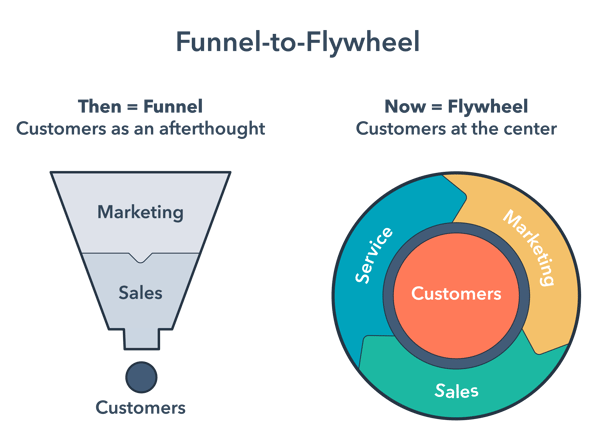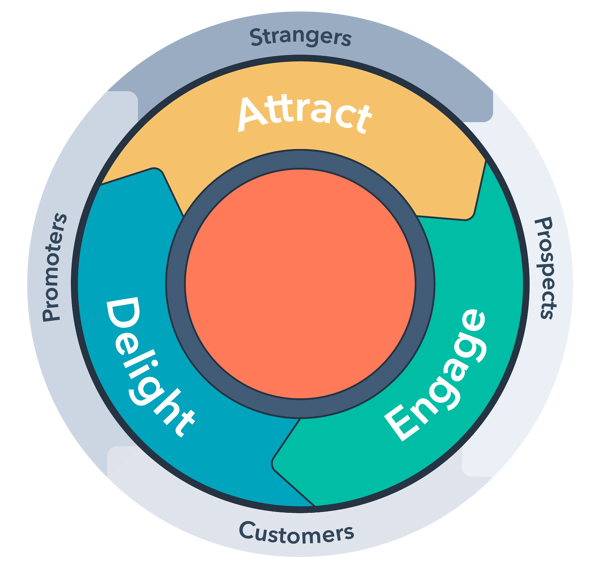The funnel has been the ‘holy grail’ of marketers for years. And for good reason! In the past, the funnel has done wonders in helping companies drive business growth – but, it just doesn’t work the way it used to anymore.

Why the funnel is ‘dead’
In today’s world, trust is running at an all-time low, making customer referrals and word-of-mouth some of the largest influencers of purchasing behavior.
If you take another look at the funnel with this new perspective, you’ll find that it has a fundamental flaw – the customers are at the bottom. And when they move through that bottom, irrespective of whether they convert into customers or remain in the prospect pool, the funnel no longer allows for them to count in your marketing efforts. If you’ve ever run or marketed a real business, you’d know that this is no way to build marketing or sales momentum for your business.

| Image Courtesy: HubSpot |
The funnel looks at customers as an afterthought, instead of what they really are – a major driving force. And this is where the Flywheel comes into play.
Why the Flywheel can inspire more effective marketing
With the funnel, all the energy spent on acquiring a customer is lost once you gain their business – bringing you back to square one. The Flywheel, however, uses the momentum of happy customers to drive referrals and repeat sales. Simply put, it’s the difference between the cost of customer acquisition vs. the lifetime value of the customer.

| Image Courtesy: HubSpot |
Implications for Marketing
The amount of energy the flywheel stores (in this case, your business growth) depends on 3 things – How fast it spins, how much friction it encounters and how big and heavy it is.
Let’s take a look at how you can change your marketing strategy to increase the momentum of your flywheel!
- Speed – The flywheel spins faster when you apply more force in areas with the most impact. While the funnel suggests that you should place your effort in attracting more customers, the flywheel brings into focus the importance of impressing your customers at every stage – attract, engage & delight.
- Friction – Reduce the amount of friction your customers encounter by identifying and resolving inefficiencies in your customer’s buyer journey.
- Size – This one’s simple – more delighted customers means a heavier wheel! You can even increase the ‘density’ of your customers by getting them to opt for more of your products.
As you continue to increase the speed of your flywheel and decrease friction, you’ll have more delighted customers adding to the weight of your flywheel – one that produces more energy, a.k.a. more momentum and business growth for you!
So as hard as it may be, it’s time to let go of the trusted (but broken) funnel and transition marketing for your business to the flywheel model.
Ready to transition from funnel to flywheel? Inception Business Services can help you out. Check out our services to learn how!









